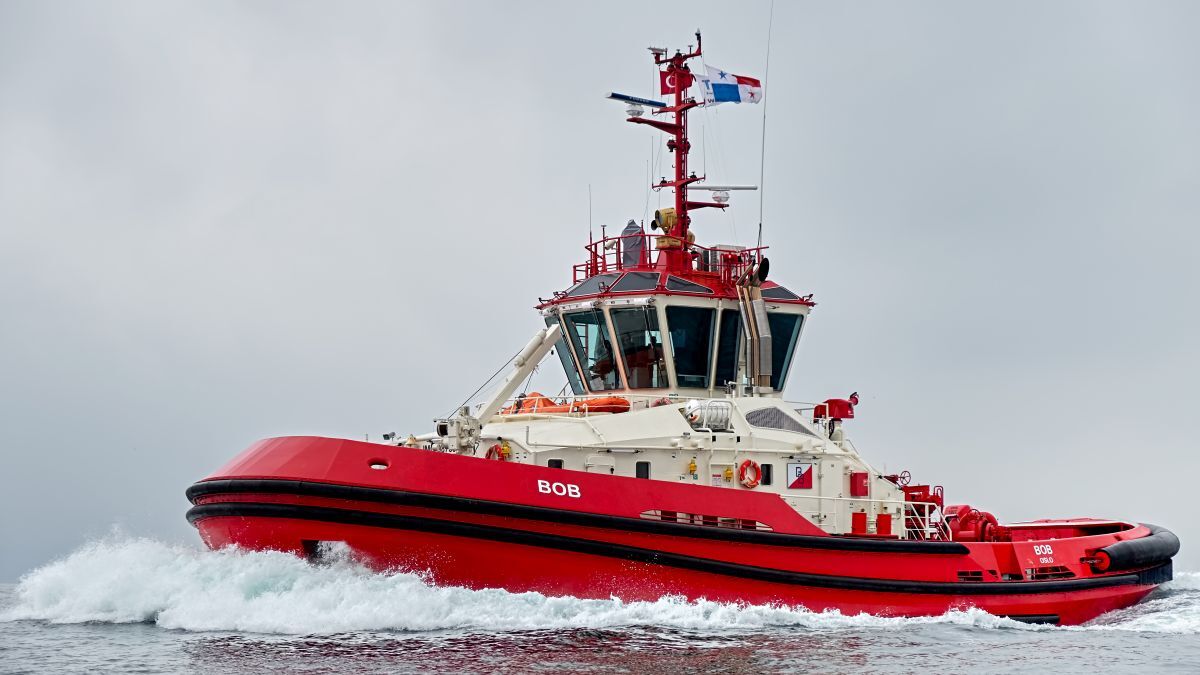Norwegian owner intends to invest further in its tug fleet, says managing director
Buksér og Berging is at the forefront of the towage industry’s decarbonisation efforts with investments in newbuildings and emissions reduction technologies. With a long history of being ahead of its time, it is the proud owner of the world’s first two purely LNG-fuelled tugboats, Borgøy and Bokn.
It has now turned to electric propulsion and digitalisation to reduce its environmental footprint further.
Buksér og Berging managing director Vetle Sverdrup tells International Tug & Salvage why it has selected emissions-reducing technologies and where it anticipates its next investments.
Sister vessels Bamse and Bob were purchased from Sanmar Shipyard in 2021. Built to Robert Allan Ltd’s (RAL) TRAktor 3000-Z design, their propulsion systems are compliant with IMO Tier III emissions requirements. Its next order is going much further in reducing emissions.
“A new contract was signed with Sanmar earlier this year for building Buksér og Berging`s first full electric tug to an ElectRA 2200-SX design,” says Mr Sverdrup.
ElectRA 2200-SX is scheduled for delivery Q4 2023. “The vessel will have a 22-m overall length, 45 tonnes of bollard pull and total battery capacity of 1,718 kWh,” he explains.
The batteries will be delivered by Bergen, Norway-headquartered Corvus and there will be one Caterpillar-built diesel generator set. “It will be the first fully electric tug in Scandinavia,” says Mr Sverdrup.
“The goal is to be the market leader in technological development and vessel design in the maritime industry.Significant resources are therefore invested in modernising existing vessels and developing future-oriented new types of vessels.”
This Lysaker, Norway-headquartered owner has also implemented fuel monitoring onits 26 terminal and harbour tugsto optimise operations and reduce fuel.
It operates 14 azimuth stern drive (ASD) tugs, seven fin-first tractor tugboats and five conventional tugs, operating on terminal contracts and in the spot market. Additionally, seven offshore support and anchor-handling tugs operate in the spot market.
“The terminal and harbour operations are mainly along the coast of Norway and Sweden,” says Mr Sverdrup. “The vessels in the spot market are operating throughout Scandinavia and the UK. Buksér og Berging`s fleet also consists of smaller mooring vessels, workboats and pilot vessels.
One of the biggest drivers behind the company’s decarbonisation strategy is the “growing pressure in Norway to introduce more low-emissions vessels in general,” says Mr Sverdrup.
“There are no specific national regulations regards to tugs, but Buksér og Berging is continuously following up regulations and preparing for the future.”
It is taking part in the nation’s Green Shipping Programme, which aims to advance the Norwegian Government’s maritime strategies and plans.
This programme and rising demand for green port operations are behind Buksér og Berging’s future investments.
“Though the company has expanded to new segments in recent years, our aim is to increase business within the tug market and make further investments in the tug fleet,” says Mr Sverdrup.
“Our present strategy as a shipowner is to be a preferred supplier in our present market segments, expand our marine contracting work, and grow the business into ocean farming, offshore wind and coastal shipping segments, both nationally and in international waters.”
This could include investing in tugs to support terminals and install floating wind-power facilities.
“We strongly believe that in the long run, reliability, safety and the highest quality provide the most cost-effective solutions to our clients,” says Mr Sverdrup.






